Menu
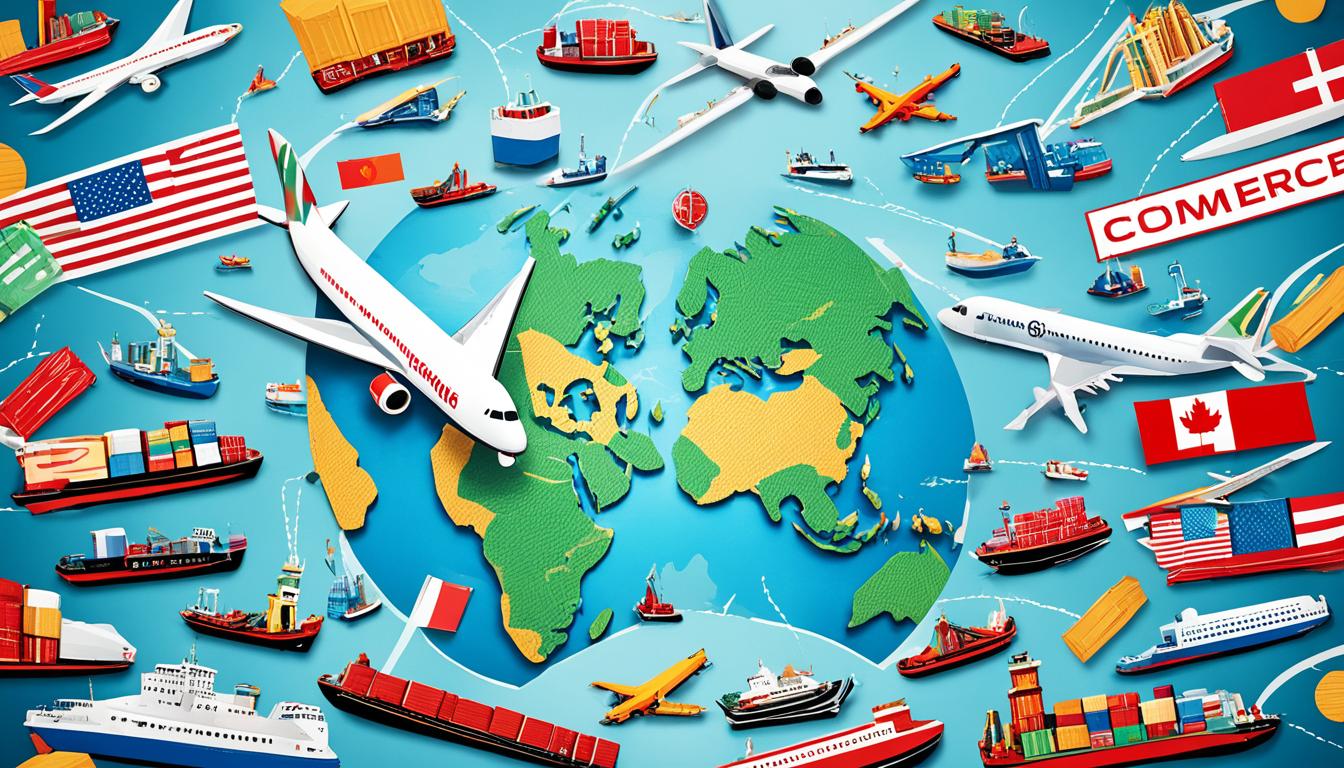
Did you know about 95% of U.S. exports don’t need a license to leave the country? This shows how critical it is for companies to know about US export regulations and global trade. Understanding these can help you access markets smoothly and achieve business success.
Market access in the US is more than just shipping products. It means understanding complex international agreements and US export rules. This guide is here to make things simpler, helping both new and experienced companies improve their export strategies.
Getting an import export license is key for businesses in global trade. It acts like a green light for moving goods across borders. Doing this without breaking trade laws is crucial. In the United States, the International Trade Administration and Customs and Border Protection (CBP) look after this.
The rules for getting these licenses can differ for imports and exports. This depends on things like tariffs and what the goods are for.
An import export license lets businesses join the worldwide market the right way. For exporting, the US Department of Commerce’s Bureau of Industry and Security (BIS) makes sure companies follow the rules.
On the other hand, importing into the USA is watched over by Customs and Border Protection (CBP). They check that the goods meet America’s standards.
To get an import license, knowing about the Harmonized Tariff Schedule (HTS) codes is a must. For exports, you need to show detailed info about the products. This step helps businesses follow trade rules correctly. It stops any surprises that could slow things down or block the process.
The big difference between import and export licenses is what they look after. Import licenses focus on what’s coming into a country. They make sure the products are up to the local standard. For the most part, CBP doesn’t demand a license for every type of import. But, some goods might need one, as other agencies see fit.
Export licenses, though, are about keeping the country safe and following its foreign policies. Exporters need to think about special rules for different products. Plus, they have to watch out for agreements other countries have made with the US. It’s super important for these businesses to keep good records. They also need to train their staff well. This makes sure they are always following the rules.
Being ready and knowing the rules well is the best bet for companies doing global business. Every detail counts. Missing something small can cause big problems. So, staying informed, keeping good records, and updating regularly is key. This keeps a company’s licenses running smoothly. Then, they can enjoy trading worldwide without trouble.
Getting export documentation right is key for those shipping to America. Having the right paperwork in order is a must. It keeps exporters clear of any legal trouble. Plus, it makes deals go through more smoothly.
Your business ID is very important for US exports. You need to include your Tax ID and other important numbers. This makes your business easy to spot by US officials. So, your goods can move out without a hitch. Having a clear ID in your paperwork helps you follow the rules. And it makes your export work better.
Next, let’s talk about product info. You have to use special codes for your goods. For imports, it’s the Harmonized Tariff Schedule. For exports, it’s the ECCN. Getting this technical info right means your products are handled correctly. This stops any issues at customs time.
The final must-have for exports is end-user details. You need to fully describe who will use your products. This info is vital to keep trade rules in check. It includes the user’s name, where they are, and what they will do with your items. This step ensures your goods are used in the right way. It also protects against any misuse.
To wrap up, solid export paperwork is critical for sending goods to the US. It includes clear business IDs, precise product codes, and detailed end-user facts. Doing these steps properly helps you follow the law. It also makes your exporting smoother.
For companies trading internationally, knowing about export licenses is key. It’s vital to understand different types and when to use them. This helps obey security rules and ensures easy shipping of certain goods.
A General Export License covers most products to most places. It avoids strict security concerns. 95% of U.S. exports fall under this, needing no extra permit. It makes shipping common goods easy. But, special destinations or uses might need another check.
Some items need a Specific Export License, like certain technologies and defence goods. This is because their export could affect security. They aren’t needed often. But when they are, the BIS makes sure it’s done right, following policy and preventing terrorism.
For items sent temporarily overseas, like for exhibitions, a different permit is used. This makes sure the item comes back to the U.S. It’s for short-term deals. It’s important to match this with the SNAP-R platform to keep within BIS rules.
| Type of License | Description | Common Applications |
|---|---|---|
| General Export License | Covers most products and destinations with minimal national security risks | Commercial products under EAR99 |
| Specific Export License | Required for sensitive items under strict regulatory control | Defence-related products, dual-use technologies |
| Temporary Export License | For short-term overseas transactions with the intention of return | Exhibitions, repairs |
In the U.S., knowing if your product needs an export license is key. Most products, about 95%, can be exported without one. But, the other 5% need a closer look. Here’s a guide to help you quickly figure out if you need a license for your export.
Start by checking if your product is on the Commerce Control List (CCL). This list looks at technical details to see if the Export Administration Regulations apply. Some products, like dual-use technologies, have special rules. If your product is EAR99, you usually don’t need a license. But, there are exceptions based on where it’s going and who will use it.
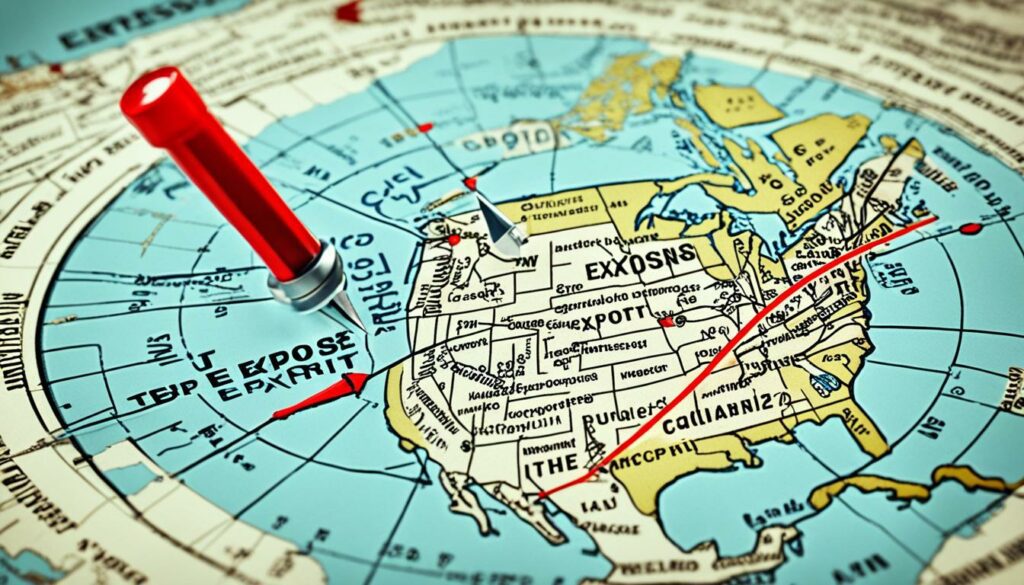
Think about how your product will be used and by whom. Sometimes, the use or the user means you need a license. If it’s for military or certain users, this is more likely. To get more help, you can ask the Bureau of Industry and Security (BIS). They can offer clear advice.
Contacting the right agencies is crucial. For defence-related goods, talk to the Directorate of Defense Trade Controls (DDTC) who works under ITAR. For other products, BIS helps. They have the SNAP-R system for easier license applications and certifications.
Knowing and following EAR rules is important. By working with the right people, you can avoid problems and stay on track.
Getting the green light to export is really tough. You need to know about trade barriers and customs. The U.S. buys more than it sells, so knowing these rules well is key to success.
Getting into markets is essential for growing. But, rules like tariffs and quotas can make it hard. Let’s say there’s a tariff for each item. This can stop cheaper goods from selling. Also, tariff rate quotas limit how much you can sell, which makes things even harder.
On top of that, strict rules about product safety and quality are big hurdles. These are known as non-tariff barriers. They make entering markets tough.
There are smart ways to improve market access:
The Committee on Market Access (CMA) and the Council for Trade in Goods (CTG) watch over market access problems. They look at things like farming, stopping unfair competition, getting import permits, and proving where products come from. Working closely with trade and agriculture officials ensures businesses follow the rules. This partnership helps open new markets for U.S. goods.
Getting an export license follows a clear path. You start by seeing if you need a license. Then, you gather all needed details. Finally, you apply using the SNAP-R system. Now, let’s explore each step.

You should first check if your product needs an export license. Most exports from the U.S. don’t need one, around 95%. This means for many deals, you won’t need to worry about extra licensing. However, certain items need a license from agencies like the BIS or DDTC. Keep in mind that products under EAR99 might have easier rules. But, always be careful to meet all requirements.
If it seems you need a license, start collecting all your product’s details. You need specs, who will use the product, and its ECCN. Also, set up an Export Compliance Program. This helps make sure you follow the rules correctly when submitting your application.
After gathering the info, you’ll apply through SNAP-R. First, you need to sign up and get a Company Identification Number (CIN). This system helps you complete your application. Be sure to fill it in correctly to prevent any hold-ups. The SNAP-R system helps make sure your application is complete and meets all rules.
Using the step guide below can make your application smoother:
| Step | Description |
|---|---|
| Identify Licensing Needs | Work out if your product is in the 5% that needs a license. |
| Gather Information | Get product specs, ECCN, and create an ECP. |
| Register with SNAP-R | Get a CIN and submit through SNAP-R. |
| Submit Application | Submit your application, making sure it follows the rules. |
It’s vital to know and understand export rules. Agencies like BIS, ITAR, and OFAC have big parts in controlling exports. Knowing these rules well is essential for any export business.
For more help, check out this guide on export licensing and compliance.
In international trade, keeping up with export import regulations is vital for smooth business and to stay within the law.
Getting a license is the beginning. It’s crucial to keep it updated through regular license renewal. Always stay alert about when your license needs renewing. Process any renewal paperwork quickly to avoid issues. Keep an eye out for any changes in regulations. Staying updated helps your business stay compliant and avoid trouble.
It’s key to keep precise and detailed records of all export transactions. This not only makes audits easier but also prepares the business for possible reviews by authorities. Clear records lessen risks of not following rules.
Sticking to export import regulations is crucial for successful trade. It means following laws both at home and internationally. Regular training on these rules for your team is smart. It keeps everyone on the same page about what’s accepted. This helps build a trustworthy business image and keeps trade ongoing smoothly.
Good license management mixes on-time updates, careful record-keeping, and sticking strongly to regulations. Focusing on these elements helps businesses create a safe and compliant trade space. This protects their place in the worldwide market.
It’s key for any business in global trade to grasp the Export Administration Regulations. This includes correctly identifying items in the Commerce Control List. This process helps companies know if their product needs an ECCN or fits under EAR99 designation.
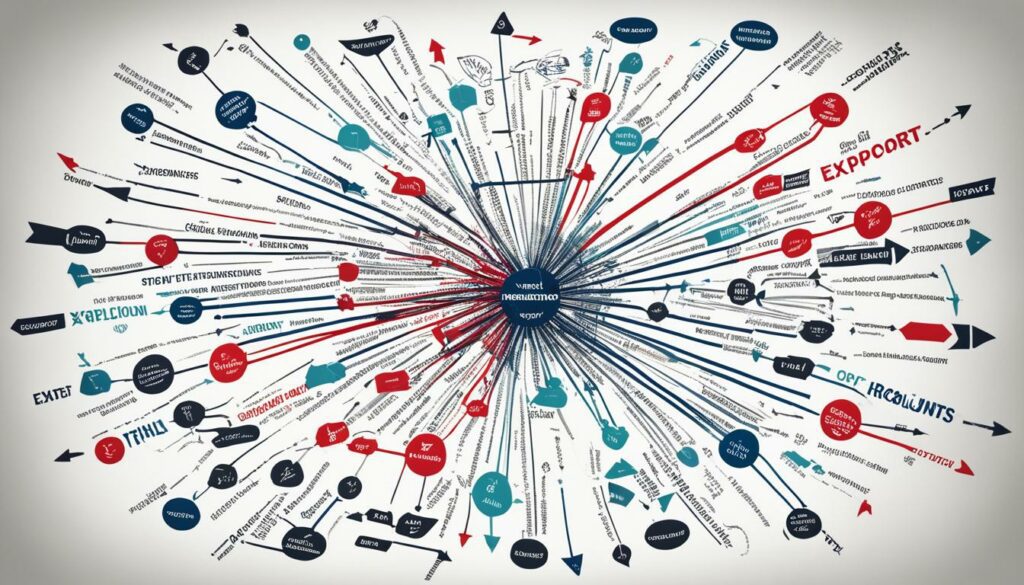
The Bureau of Industry and Security (BIS) plays a big role in all this. They carefully check export requests and make sure rules are followed by global checks. These checks are known as End-Use Checks (EUCs).
Knowing about export controls is vital, covering areas like national security and anti-terrorism. The BIS’s Office of Technology Evaluation keeps an eye on U.S. export data and applications. Their work supports setting up these controls.
It’s also important to know about the Consolidated Screening List (CSL). It combines several lists for checking potential business partners. This check is done to make sure all rules are met.
The CSL API is a handy tool for checking people or businesses electronically. It helps ensure deals follow the law. Signing up for email alerts about CSL updates is smart for staying compliant.
To do global business right, knowing your item’s commodity classification is crucial. You need this knowledge, alongside following the Export Administration Regulations. Doing so leads to ethical and law-abiding export businesses.
Understanding tariffs and duties is key for global businesses. These extra costs, like taxes, make imported items cost more. This can change how the market works.
There are many kinds of tariffs. They include specific amounts, percentages of value, and other rules. Things like licences and import limits are also used to limit imports. These measures help protect local industries. For example, President Donald Trump put tariffs on aluminium and steel. This made these products more expensive for Americans to buy.
The first step to reduce tariffs is to correctly label products. Using trade agreements wisely can also help. For example, the USMCA improves trade among the US, Canada, and Mexico. But some tariffs from 2018 still apply. Using new tech can make paperwork easier, cutting mistakes and keeping up with rules.
Businesses might also look into getting products from countries not affected by these tariffs. Countries like Argentina, Australia, Brazil, and South Korea could be good choices. Knowing how prices might change can help firms plan better.
Another good move is looking into trade credit insurance. This kind of insurance is becoming more popular. It can help companies if tariffs or other trade issues cause buyers to not pay them back.
Global trade barriers make it hard for companies to enter new markets. These can be tariffs or complex rules that need careful planning to overcome. But, there are ways to beat these hurdles. Follow trade laws and use available resources to improve your chances of success.

Trade limits often include taxes on imports, caps on the amount you can bring in, and strict quality standards. The U.S. has a long history of importing more goods than it exports, with a monthly deficit of $260 billion between 2018 and 2020. Import taxes raise the price of brought-in goods, while volume limits restrict competition. This makes it harder to sell more of your product in that market.
| Trade Barrier | Definition | Impact |
|---|---|---|
| Import Tariffs | Taxes on goods upon entry | Increases the cost of imported goods |
| Tariff Rate Quotas | Caps on volume of imports | Restricts market access |
| Quotas | Quantitative restrictions on imports | Limits competition |
Dealing with these hurdles needs a smart and wide-ranging plan. Being part of trade deals can lower tariffs, make rules simpler, and clear the way. Making sure intellectual property is safe also helps. It means more investment and innovation, which are key.
Backing from trade finance tools and making permits easier to get are also important. This helps goods move easier. Investing in transport and logistics can really boost how smoothly you can move your products.
Even a small cut in import taxes can make companies more productive. Over ten years, less tax on imports in rich countries boosted productivity by around 1%. Getting rid of all these taxes could make businesses even more efficient, especially in places like Korea and Japan.
Plus, when companies invest and trade freely, everyone can win. Less tax on what’s brought in makes not only companies but also countries better off. Still, it’s important to make sure workers don’t lose out from these changes. This might include training them for new jobs or protecting their wages.
To sum up, getting past trade hurdles takes careful planning, following rules, and active involvement in global trade deals. Using these methods can help companies get through trade obstacles, leading to success in new markets.
Understanding and following trade rules is key for international trade. By sticking to export and import laws, businesses avoid big problems and fines.
It’s vital to know and follow the Export Administration Regulations (EAR) and the International Traffic in Arms Regulations (ITAR). Doing this keeps operations legal, reducing the chance of breaking export laws. Legal actions protect everyone’s safety and help companies keep a good name in the global market.
Not keeping up with trade laws can bring severe punishment. Companies may get fined, have their goods delayed, or even face criminal charges. GE Companies, for instance, had to answer for payments they received from banned entities from 2010 to 2014. Failing to comply can cost a lot and harm a company’s good standing for a long time.
Accurate classification, getting the right licenses, and checking things often can stop export problems. Good trade practices, like lots of training and keeping records current, help goods move legally and quickly. This makes customers happier and gives businesses a competitive edge.
To smoothly get goods out of a country, good customs clearance is key. This means following strict customs rules. It also needs help from customs brokers. They work between the exporter and the customs officials.
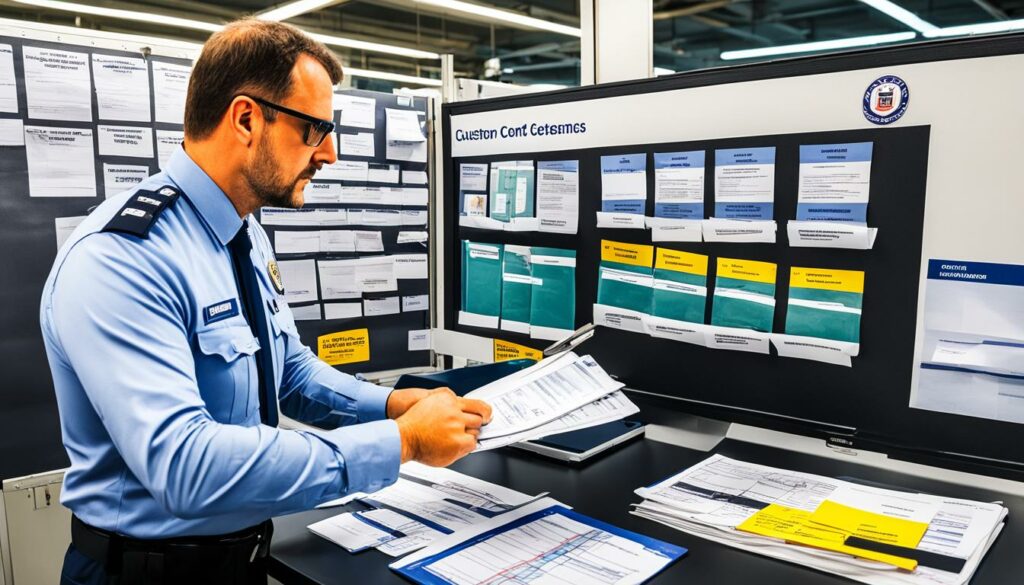
When exporting, there are crucial steps to follow at customs. Entries with goods worth more than US$2,500 or controlled, like food, undergo detailed checks. They need specific documents such as:
For items under US$2,500, the process is simpler. But, customs still checks these. They look at the value, check the labels, and ensure they meet all rules to stop illegal goods from entering.
Customs brokers are crucial in international trade. They handle all needed paperwork for exports. This is vital for both Canadian and American customs.
They’re skilled at getting goods through the EU’s customs too. This includes things like ‘Release for free circulation’ and ‘Temporary admission’.
To trade in the EU, you also need an EORI number. And it’s important to submit paperwork on time. Doing this helps get your goods through fast and often with cheaper taxes.
But, customs brokers do more than just paperwork. They help make international trade less complex.
To ensure you follow the rules for export compliance and make international shipping smooth, it’s vital to use the best practices for export paperwork.Properly filling out and handling paperwork helps avoid delays and legal problems. When your shipment is worth over $2,500 or needs a special license, it’s critical to file the Electronic Export Information (EEI) accurately.
Make sure the U.S. Principal Party in Interest (USPPI) info in the EEI is right. This is necessary to meet U.S. export laws. For certain items, amounts, where they’re going, and how they’ll be used, you may need an export license. The U.S. Department of Commerce looks after these licenses.
For items on the Commerce Control List not in the EAR99 group or subject to ITAR, you need a Destination Control Statement (DCS). The DCS shows where the items can be sent. It stops them from being used in places they shouldn’t be.
When it comes to export paperwork, you also need to be accurate about what you’re sending, how it’s classified, and who will use it. This helps smooth things out with customs and keeps you in line with the rules. Here are important paperwork and what they need:
| Document | Description | Requirement |
|---|---|---|
| EEI | Filed electronically for shipments over $2,500 or with a special license. | Mandatory |
| USPPI | Shows who the U.S. Principal Party in Interest is in the EEI. | Mandatory |
| Export License | Let’s you send specific items to certain places for certain reasons. | Conditional |
| DCS | Shows where items from the Commerce Control List can be sent. | Mandatory if applicable |
| FTA Certificates of Origin | Needed depending on what you’re sending and where it’s going. | Conditional |
Knowing and using these top tips for documentation verification is key for companies dealing with international shipping. By getting all their paperwork right, businesses can lower risks and make exporting smoother and more efficient.
Sensitive items, especially those for defence and military, need careful handling. This is to follow strict rules. It can be tricky, but knowing about ITAR and EAR is key. This helps in doing lawful international trade.
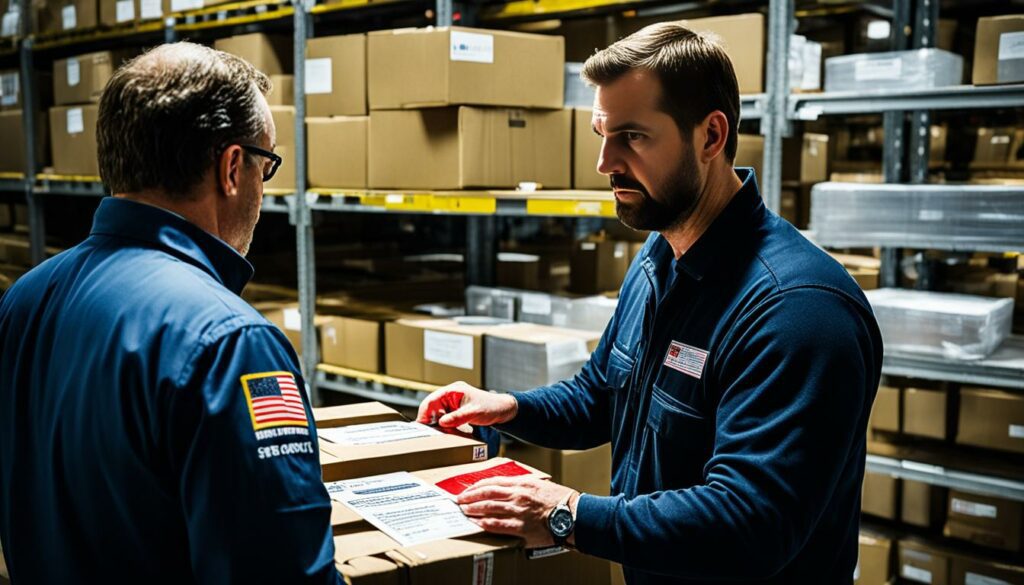
To get a licence for sensitive items, you need to know about ITAR and EAR. ITAR deals with defence items and services under the U.S. Department of State’s rules. On the other hand, EAR covers non-critical defence items and commercial goods. It’s looked after by the Bureau of Industry and Security (BIS) in the U.S. Department of Commerce.
Almost 95% of items leaving the U.S. don’t need an export licence. Although many goods are exempt, ITAR and EAR make sure important items are controlled. They help protect national security. Even EAR99 items can need a licence, depending on where they’re going and how they’re used.
In defence trade, you must follow ITAR and EAR. First, you identify what’s being exported. Then, you look at where and how it will be used. Exporting sensitive items means you must report in the Automated Export System (AES), as EAR Section 758.1 states. This is true even if no licence is needed.
The U.S. Department of Treasury’s Office of Foreign Assets Control (OFAC) also adds some rules. They deal with financial sanctions for certain countries and groups.
Getting registered with the SNAP-R system is free and crucial. It’s for businesses that need export licences. BIS offers training to help you understand export rules better. This includes one to two-day seminars on various topics.
To sum up, getting a licence for sensitive items means knowing ITAR and EAR well. Following the rules carefully helps in safe and legal global trade of defence items.
Creating a good Export Management and Compliance Program (EMCP) is key. It makes sure export work follows U.S. export laws. The Bureau of Industry and Security (BIS) highlighted some crucial steps in November 2013.
Nine core elements are vital for a strong EMCP, as identified by the BIS. These include:
A solid written compliance plan is a must-have for any EMCP. This plan should lay out policies and procedures in line with U.S. Export Administration Regulations (EAR). It ensures all export processes are right, offering a solid guide for staying compliant.
Training is vital to keep up with compliance. Regular programs keep staff well-informed about export laws and their duties. Making people aware can lower the chance of breaking the rules by mistake. This helps protect the organisation’s interests.
To export to the US, having a strong global trade strategy is key. This includes knowing and following export laws. Trade is influenced by special agreements between countries. These can lead to big growth in trade over time.
There were over 200 special trade deals by 2008, with more being added. These agreements make it easier for countries to sell to each other. For instance, they can boost trade among members by 90% on average. This shows their big impact without causing problems in other trade, like the case with the US-Canada deal.
Looking at successful deals helps in making your own export plans. A big part of world trade is under special agreements. These agreements make about 30% more profitable from trading. Knowing details like different tariff rates is crucial for exporting well. Good planning and action help businesses grow steadily and deal with US market challenges.
An import export licence lets goods move from one country to another. Customs and Border Protection and the International Trade Administration oversee these in the US. Import licences make sure items fit local rules. Export ones check national security and follow overseas policies.
Import licences check that goods coming in meet local standards. Export ones see to security and abroad policy needs. Rules for both depend on things like trade agreements and controls over specific goods.
You need to give proper business ID for exporting to the US. This includes a Tax ID and other registration details. It makes sure you follow US export rules.
You must have correct product data, like the HTS code for imports or ECCN for exports. This is key for following US export document needs.
Knowing the end-user stops goods being used the wrong way. It supports the rules of trade agreements.
It’s for products that aren’t high security risks. It makes exporting easier for several times with one licence.
For very controlled products, you need a special export licence. These goods could affect national security or fall under strict trade deals.
It’s for sending goods overseas for a short while, like for shows or displays. The goods must come back after.
See if your product is on the Commerce Control List. Think about who will use it and how. You might need to talk to the maker or the Bureau of Industry and Security.
They help you follow export laws and use trade deals well. This makes getting into new markets smoother.
First, check if you need one. Then get all your product info together. Apply using tools like SNAP-R for a smooth process.
Keep your info up to date and your records in order. Follow any new export rules. This keeps your licences valid.
Know your products’ classes under the Commerce Control List. Understand things like ECCN and EAR99. Make sure you follow all security and policy controls.
The cost changes based on your product and trade deals. Classify your product correctly to pay less. Use trade deals to your advantage.
Tariffs, rules, and limits on imports are big hurdles. To beat them, learn the market well. Stick close to trade laws and use agreements cleverly.
It keeps you and your country safe and your name good. Breaking trade laws can lead to fines or worse.
Customs must check and okay your goods leaving. Use a customs broker for an easy time with this.
Fill out papers right with clear product info. Use the right codes and make sure everything follows shipping rules.
For special goods, you must know ITAR and EAR rules well. This keeps your exports within tough legal lines.
Your plan needs to be clear, with support from the top. Teach your team how to follow it. This all should stick to the EAR and other key rules.